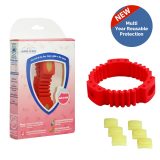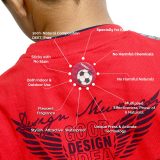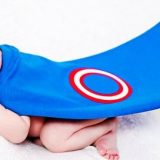Proper Baby Bathing and Massage Etiquette Guide
As a parent, ensuring the well-being and comfort of your baby is a top priority. One essential aspect of caring for your little one involves bath time and massage. Not only are these activities beneficial for your baby’s health and development, but they also provide an opportunity for bonding and relaxation. In this article, we will provide you with a comprehensive guide on proper baby bathing and massage etiquette, covering everything you need to know to create a safe and enjoyable experience for both you and your baby.
Introduction
Bathing and massaging your baby are not only essential for hygiene but also promote relaxation, stimulation, and improved sleep. By following proper etiquette and guidelines, you can enhance the overall experience for both you and your baby, ensuring a positive and enjoyable routine.
The Importance of Baby Bathing and Massage
Bathing and massage play crucial roles in your baby’s development. Bath time helps keep your baby clean and fresh, while massage offers numerous benefits, such as improving circulation, enhancing muscle tone, and fostering emotional bonding. These activities also provide an opportunity for sensory exploration and relaxation, aiding in your baby’s overall well-being.
Preparing for Bath Time and Massage
Before beginning the bath or massage session, it is essential to prepare everything you need to ensure a smooth and safe experience. Gather all the necessary items, such as towels, mild baby soap, a soft sponge, a washcloth, a gentle baby shampoo, a suitable massage oil, and clean clothes. Additionally, make sure the room is warm and free from drafts, as babies are sensitive to temperature changes.
Create Precious Moments of Bonding: Find the Perfect Baby Bath Products at Our Exclusive Shop
Choosing the Right Products
When it comes to selecting bathing and massage products for your baby, opt for gentle and hypoallergenic options specifically formulated for infants. Avoid products that contain harsh chemicals, fragrances, or artificial dyes, as these can cause skin irritation. It is advisable to consult with your pediatrician or dermatologist to determine the most suitable products for your baby’s delicate skin.
Ensuring a Safe Environment
Creating a safe environment is crucial to prevent accidents during bath time and massage. Never leave your baby unattended in the bathtub or on a high surface, as babies can quickly move and accidents can occur. Use a non-slip mat or cushion in the bathtub to prevent your baby from slipping. Keep all electrical appliances away from the water, and ensure the room is well-lit and massage.
Bathing Your Baby
When it’s time to give your baby a bath, follow these steps to ensure a safe and enjoyable experience:
1. Setting the Right Water Temperature
Fill the bathtub with warm water, around 2-3 inches deep. Test the water temperature using your wrist or elbow to ensure it’s neither too hot nor too cold. The ideal water temperature should be around 100°F (37°C), similar to your body temperature.
2. Supporting Your Baby
Gently support your baby’s head and neck with one hand while using the other hand to hold and guide their body. Never leave your baby unattended in the bathtub, even for a moment.
3. Gentle Cleansing Techniques
Use a mild baby soap or cleanser to clean your baby’s body, gently lathering it with your hands or a soft sponge. Pay special attention to the folds of the skin, such as the neck, armpits, and diaper area. Use a washcloth to clean your baby’s face, avoiding getting soap in their eyes. Rinse thoroughly with warm water, ensuring no soap residue remains.
Massaging Your Baby
Massage can be a soothing and bonding experience for both you and your baby. Here are some guidelines for a safe and effective baby massage:
1. Benefits of Baby Massage
Baby massage offers numerous benefits, including improved blood circulation, digestion, and muscle development. It can also promote better sleep, relaxation, and emotional bonding between you and your baby.
2. Selecting a Suitable Massage Oil
Choose a baby-safe massage oil, such as coconut oil or almond oil. Avoid using oils that contain strong fragrances or artificial additives that may irritate your baby’s skin. Perform a patch test on a small area of your baby’s skin to ensure there are no adverse reactions.
3. Creating a Relaxing Atmosphere
Find a quiet and warm room where you and your baby can relax. Dim the lights, play soft music, and minimize distractions. Ensure your hands are clean and warm before beginning the massage.
4. Proper Massage Techniques
Start by gently massaging your baby’s legs and feet, using long, stroking motions towards the heart. Move up to the arms, back, and chest, using gentle, circular motions. Avoid putting excessive pressure on your baby’s delicate skin and be attentive to their cues. If your baby seems uncomfortable or cries during the massage, adjust your techniques or try again at another time.
Post-Bath and Massage Care
After the bath and massage, gently pat your baby’s skin dry with a soft towel, paying attention to the folds and creases. Apply a mild moisturizer to keep your baby’s skin hydrated and prevent dryness. Dress your baby in clean and comfortable clothes, ensuring they are neither too tight nor too loose.
Establishing a Routine
Consistency is key when it comes to bathing and massaging your baby. Establish a regular schedule that works for both you and your baby. This routine will help your baby associate bath time and massage with relaxation and comfort.
Common Mistakes to Avoid
To ensure the best experience for your baby, avoid the following common mistakes:
- Rushing through bath time and massage.
- Using excessive force or pressure during massage.
- Overusing soap or harsh cleansers.
- Neglecting to test the water temperature before bathing.
- Leaving your baby unattended during bath time.
Frequently Asked Questions (FAQs)
- Can I bathe my baby immediately after feeding?
• It’s best to wait for at least 30 minutes after feeding before bathing your baby to prevent discomfort and possible reflux. - How often should I bathe my newborn?
• For newborns, bathing two to three times a week is sufficient. As your baby gets older and becomes more active, you can increase the frequency to daily or every other day. - Should I use a specific type of towel for my baby?
• Opt for soft and gentle towels made specifically for babies. Avoid using rough or abrasive materials that can irritate your baby’s delicate skin. - What if my baby doesn’t enjoy bath time or massage?
• Every baby is different, and some may take time to adjust to bath time and massage. Be patient and try to create a calming and soothing environment. If your baby continues to show discomfort, consult with your pediatrician for further guidance. - When can I introduce toys during bath time?
• Once your baby can sit up steadily and has better control of their movements, usually around 6-8 months, you can introduce bath toys. Choose toys that are specifically designed for bath time and ensure they are free of small parts that could pose a choking hazard.
Conclusion
Proper baby bathing and massage etiquette are essential for creating a safe, enjoyable, and bonding experience for both you and your baby. By following the guidelines outlined in this article, you can ensure that bath time and massage become cherished moments of relaxation and nurturing. Remember to prioritize your baby’s safety, use gentle and baby-friendly products, and establish a consistent routine that promotes their well-being.













